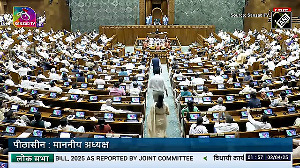While still not as drool-worthy as their private sector counterparts, the hike is quite hefty, and across segments
 A week after Diwali, India’s civil servants have been given a special bonus it seems, in the form of the 7th Pay Commission recommendations that push up salaries of the staff manning ‘India’s steel framework’ by a respectable amount.
A week after Diwali, India’s civil servants have been given a special bonus it seems, in the form of the 7th Pay Commission recommendations that push up salaries of the staff manning ‘India’s steel framework’ by a respectable amount.
While still not as drool-worthy as their private sector counterparts, the hike is quite hefty, and across segments.
So just how much do you think our civil servants earn? Here’s a rough idea (rough, because while the basic pay is fixed, the variable pay is in the form of Dearness Allowance, HRA and other allowances).

All bureaucrats, on clearing the Civil Services Exam, start off at with a two-year probation at the lowest grade, or Junior Time Scale. The current payscale (or basic pay) here is Rs 15,600 to Rs 39,100 (with a grade pay, or a fitment allowance, of Rs 5400). The 7th Pay Commission has done away with grade pay, and opted to rationalise payscales.
Including the grade pay, the entry-level pay for bureaucrats in this range is Rs 21,000 to Rs 29,500. Once again, it is not as low as it seems, because the bureaucrat gets a host of other allowances, including housing, official vehicle, etc, which is not reflected in this figure.
This is the pay band that a fresh bureaucrat currently occupies, and will move into the Senior Time Scale after four years of service (at the Under-Secretary level), and in the Junior Administrative Grade after nine years of service (at the Deputy Secretary level).
After the 7th Pay Commission recommendations are implemented, in effect, at the starting level, the bureaucrat will have an entry pay in the band of Rs 56,100 to Rs 78,800.
After 14 years of service, during which time he will have spent time as sub-divisional magistrate, DM or sub-collector, the bureaucrat will now move into the director or secretary in a government department slot, otherwise called a Non-functional Selection Grade in Junior Administrative Grade, in the payscale of Rs 37,400 to 67,000, and will continue in this band even in the Senior Administrative Grade (Joint Secretary level).
With a grade pay of Rs 8700, this translates into an entry pay of Rs 46,100 to Rs 53,000.
This will now be revised into a payscle of Rs 46,100 to Rs 53,000, and an entry pay of Rs 118,500 to Rs 144,200.
On becoming Additional Secretary in the Higher Administrative Grade, the bureaucrat is currently in the payscale of Rs 67,000 to Rs 79,000, with an entry pay of Rs 67,000.
The entry pay has now been revised to Rs 182,200.
In the next payscale, the Additional Secretary moves into the Rs 75,500 to Rs 80,000 bracket, with an entry pay of Rs 75,500 which will now go up to Rs 205,400.
After 30 years of service, on becoming a Secretary, the bureaucrat moves into a fixed, apex payscale of Rs 80,000, which will now go up to Rs 225,000.
On the rare chance of becoming Chief Secretary, the bureaucrat currently earns Rs 90,000, which will go up to Rs 250,000 once the 7th Pay Commission recommendations are implemented.
Graphic: Reuben NV/Rediff.com









 © 2025
© 2025